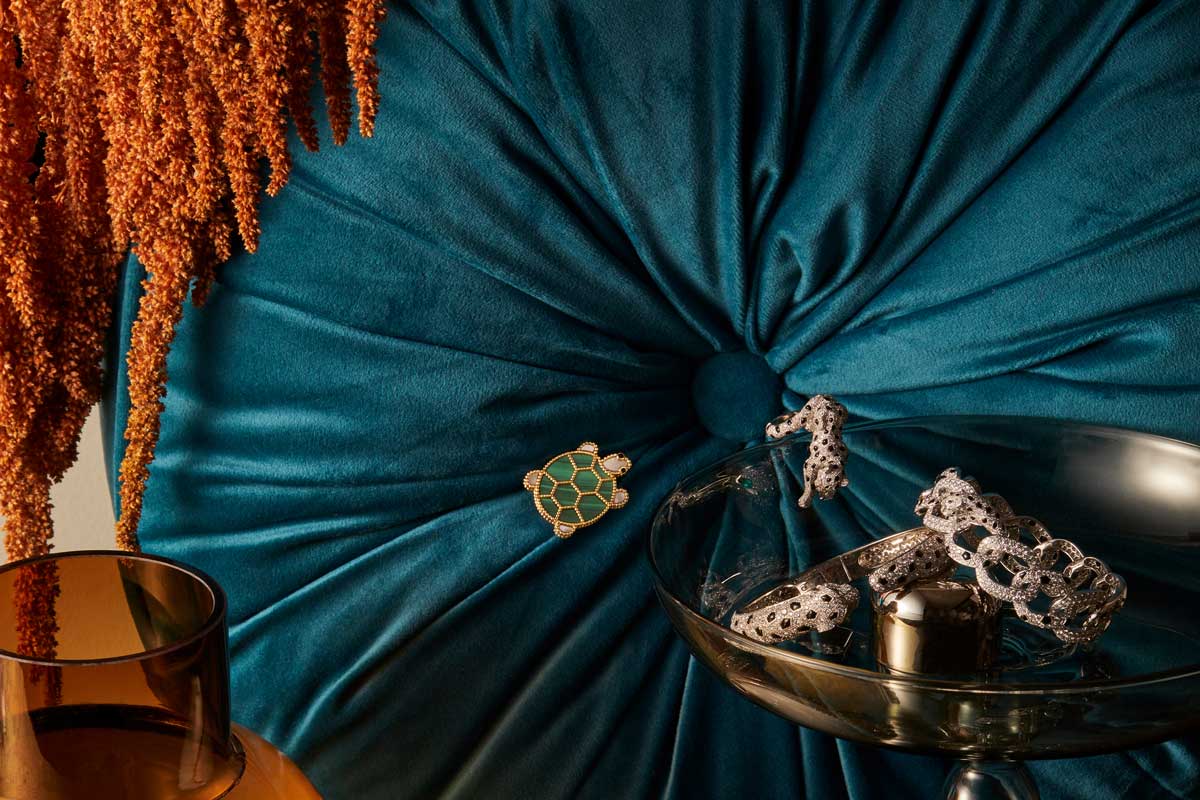Whimsical, evocative, daring — the symbolism of animals has remained a creative bastion for untold luxury jewellers over the years. And whether selected for protection, luck or an embodiment of the wearer’s guiding values, adorned species come to serve as aesthetic allies — friends that can be worn close to the chest. From literal depictions to abstract renderings, the best creations are a precise alchemy of elegance and ferocity, making them the true power pieces of the jewellery world. Little wonder the call of the wild is as persuasive as ever.
For examples of nature’s enduring influence on design, look no further than Cartier. Myriad animals have appeared in the maison’s collections — from lions and tigers to butterflies and turtles — but the feline reigns as its most celebrated motif, manifested in the now-iconic Panthère collection. First appearing at the house in 1914, the panther was illustrated in an exhibition invitation commissioned by Louis Cartier. But it was in the hands of his lover, Jeanne Toussaint (who was to become the director of Cartier’s luxury jewellery department), that the wildcat transformed into one of the brand’s most recognisable keepsakes, conceived as an expression of strength and independence.
Integral to the fabric of the maison’s aesthetic, the Panthère has enjoyed lasting success through continued evolution. Attention to detail pervades, with artisans painstakingly moulding and positioning the gemstones to communicate muscle, movement and vivacity. There is a material for every mood, with contemporary incarnations making heroes of onyx and emerald. The Panthère de Cartier bracelet, for example, features an 18-karat white gold cuff sprinkled with 225 brilliant-cut diamonds and flecks of onyx, with emerald eyes to characterise the feline head. A linked iteration has identical stones but the cat assumes a more languid posture, its body draped playfully across the chain.

The snake, synonymous with evil or renewal (depending on your preferred animal lore), is another lasting talisman. Egyptian pharaohs and queens adorned their bodies and headdresses with cobras and serpentine coils, the natural curvature of the snake providing an ideal shape for the neck and wrists. Queen Victoria also gravitated towards the viper in the 19th century — her engagement ring, a ruby-and- emerald-set snake, incited a decades- long obsession with wearable serpents. And just as it seduced Adam and Eve in the Garden of Eden, the serpent burns brightly in the subconscious of the maison Bulgari, its Serpenti collection ensnaring the affection of high jewellery lovers for decades.
Reminiscent of a snake shedding its skin, the motif has evolved with various interpretations over the years. In a delicate homage to its iconic design, the new Bvlgari Serpenti Viper necklace mirrors the fluidity of the animal with an added dose of sex appeal, rendered in rose gold with diamonds dotting the head and tail. A collision of old-world glamour and ultra-contemporary design shapes the Viper ring, which is crafted in 18-karat gold and set with demi-pavé diamonds. And the Serpenti Ring ’16, with its pink gold band, rubellite eyes and pavé-set head, is a luxurious synthesis of temptation and sensuality.
Of a slightly less vicious nature, the bee has fulfilled a similar function in many of Chaumet’s most coveted pieces. An emblem of the First and Second empires, its prominence speaks to the French maison’s role as jeweller to Empress Joséphine and Napoléon Bonaparte, who favoured the creature as a symbol of royalty and imperialism. Chaumet’s Bee My Love collection nods to the motif’s origins, featuring a geometric pattern reminiscent of honeycomb. Its most striking piece? The aptly christened Exquises ring, featuring a band of tessellating hexagons crafted from rose gold with three diamond bees circling a lustruous rhodolite garnet stone (mimicking the animal’s pursuit of nectar).
At Van Cleef & Arpels — a house associated with the majesty of flora and fauna — creatures great and small are celebrated in the Lucky Animals collection: a series of astonishingly vivid and poetic brooches rendered in ornamental stones and metals. Charming pieces include the Turtle clip, which harnesses the evenly spaced veins in malachite to evoke the nuances of a turtle’s shell, and the Hedgehog clip, rendered in the house’s signature grey mother-of-pearl. Whether it’s a panther for your neck or a panda for your lapel, there has never been a better time to tap into your animal side.
